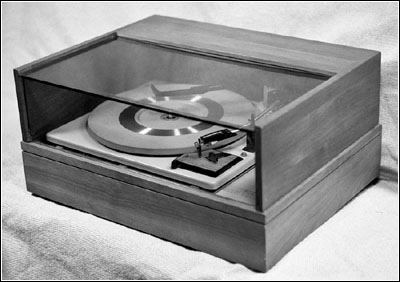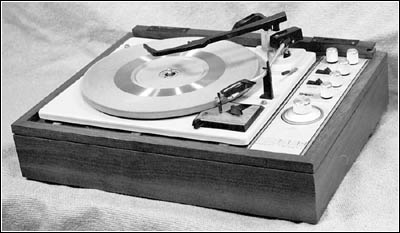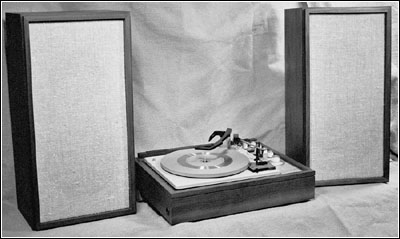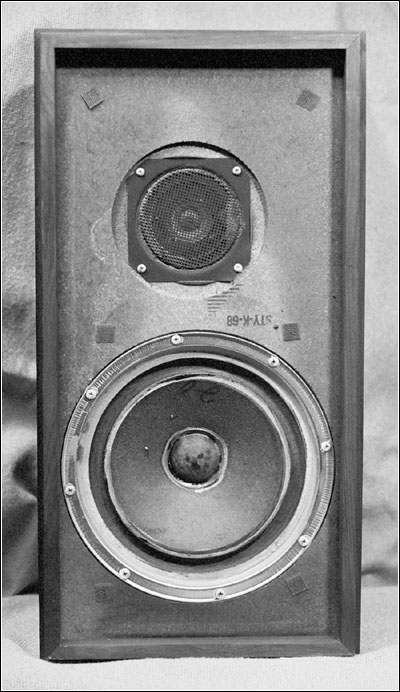Of Old Radios And Related Items--Published Monthly
Kloss Brings Modular Hi-Fi to the Masses
BY ANDREW HAYDEN
Web Edition
Henry Kloss's extensive contribution to consumer electronics in the 20th century continues to be a primary interest for Andrew Hayden, who wrote about the KLH Model Eight and other KLH products in the June 2005 issue of A.R.C. Here Andrew discusses Kloss's introduction of modular systems into the KLH line. An article on the KLH Model Eight also appeared in the November 2002 issue of A.R.C. (Editor)
Since his passing in 2002, Henry Kloss's reputation as a true audio pioneer has been firmly established. A picture of his fifty years in consumer electronics is now coming into focus, beginning with his cofounding of Acoustic Research in 1952 and concluding with the design of table radios for Tivoli Audio in 1999-2000.
Back in the mid-1960s, at his company KLH, located in Cambridge, Mass., he introduced half a dozen different modular systems of wonderful quality. In company literature of the day, page 1 reads, "Dedication to the consumer, for he likes to get value for his money." Most agree that KLH stood behind these words.
The Model Twenty shown with its optional dust cover.Many refer to Kloss as an inventor, but he thought of himself more as a synthesizer -- one who learned about various elements of hi-fi and then put them together. In a 1996 interview, he said "Particular things I have done so obviously could have and should have been done before, yet they hadn't been done." He goes on to say, "Profit margins were low at KLH. Despite having higher end products, prices stayed fixed for years. It was idealism and a quest for volume."
KLH Modular Systems
Long play records had reached new levels of dynamic range by the early sixties, approaching that of the original sound with surface noise being dramatically reduced. Over half of the sales were now 2-channel stereophonic, instead of monophonic like the discs of the 1950s. Kloss felt that these stereo LPs were such a fine source of quality sound that he put major resources of KLH into modular systems.
The Model Twenty phonograph changer and control unit.First was the fully transistorized Model Eleven "suitcase" portable, which was the world's first solid-state portable phonograph. It was quickly followed by the Model Eleven W, a shelf version housed in an oiled walnut cabinet. Upgraded systems began appearing in 1965: Models Fifteen, Nineteen, Twenty, Twenty-four, and Twenty-six, all having walnut cabinets.
The Model Twenty system shown with the its two acoustic suspension speakers.The overall appearance of the different models was very similar. Each one had a different configuration, power output, and speaker size, but all were designed and built by KLH. Some were phono only, some phono-FM, while still others had phono, FM & AM. The record changer was England's Garrard AT-6 modified to KLH specifications to include a constant speed synchronous motor, a fine tolerance motor pulley to reduce rumble, and a low-mass tone arm with a Pickering V-15/AT-2 cartridge.
Platter speeds were 33, 45 and 78, with the 16 rpm speed included on certain models. Tone arm cueing was added on later models. Radio versions had Kloss's famous tuner with its unique vernier dial, providing excellent selectivity and sensitivity. Included was a zero-center tuning meter.
The Models Twenty and Twenty Plus
The Model Twenty, shown on these pages, was the top of the line offering from KLH. It was a phono-FM version selling for $399.95. This model has the optional deluxe solid walnut and Plexiglas dust cover for $30, but does not have the available AM tuning dial.
A company brochure suggested this model if you listened to music at something approaching concert hall volumes. It featured 50 watts of IHF music power with a very low harmonic distortion of 1 percent. It came with the largest speakers, each having a 10" acoustic suspension woofer and a 13/4" wide dispersion tweeter. On the back of each cabinet is a 3-position, high frequency level switch to adjust for varying room acoustics. Most impressive was the fact that KLH guaranteed these speakers to match within 1 db over the entire audio frequency range.
The ultimate system was the Twenty Plus -- basically a Model Twenty with its cabinet and speakers designed by industrial designer David Price. Sitting on modernist aluminum pedestals, it was very cool looking and sold for $525. This is a scarce item.
What made these systems so popular was that for the first time you could own a high-fidelity setup which was easy to buy, hook up and use. Previously, components were researched and bought separately -- usually including an amplifier, tuner, speakers and turntable with the associated wiring.
>The Model Twenty acoustic suspension speaker with the grille removed. Shown are the 10" woofer and the 13/4" diameter tweeter cone in a 41/2" square basket and black mesh grille cover.Before long, the competition introduced their systems. Among the better ones were Sony, H.H. Scott and Pioneer, but they couldn't quite match KLH's level of sophistication or performance. Altogether, KLH sold close to 500,000 of its modular units between 1965 and 1971, making them fairly easy to find today, with collector prices generally ranging from $25 to $150, depending on the model and its condition. The Twenty Plus can bring noticeably higher prices.
All versions have stood the test of time very well due to the high-build quality of KLH products. I've rescued several from dusty basements and found all that is usually needed is a good cleaning, a relubing of the changer mechanism and maybe a new stylus. The Model Twenty pictured here easily fills a really large room with the sound of those forgotten LPs, and the FM reception is fantastic, even without a 300-ohm antenna attached. A KLH system is a must for any collector of mid-20th century hi-fi!
References:
Lander, David. "An Interview with Henry Kloss," Audio Magazine, 1996.
High Fidelity Magazine, December 1966.
The Amazing Music Boxes of KLH, catalogue.
Villchur, Edgar. Reproduction of Sound. New York: Dover Publications, 1965.
(Andrew Hayden, 4 Barton Court, Newburyport, MA 01950. Email: ash222@verizon.net.)
Andrew Hayden has collected and researched vintage KLH electronics for over ten years.
| [Free Sample] [Books, etc., For Sale] [Subscribe to A.R.C./Renew] [Classified Ads] [Auction Prices] [Event Calendar] [Links] [Home] [Issue Archives] [Book Reviews] [Subscription Information] [A.R.C. FAQ] URL = http://www.antiqueradio.com/Mar06_Hayden_Kloss.html Copyright © 1996-2006 by John V. Terrey - For personal use only. Last revised: February 26, 2006. For Customer Assistance please contact ARC@antiqueradio.com or call (866) 371-0512 toll free Pages designed/maintained by Wayward Fluffy Publications
Antique Radio Classified |



